I'm new to this, but I like to believe I'm prepared for fishy motherhood! If I'm doing anything wrong or questionable, please let me know!
Don't wanna be here? Send us removal request.
Link
Even after her death Carrie Fisher is having none of your bullshit.
Heather Ross, a friend of Fisher��s, spoke to a local radio station in Tucson, AZ. about her experience with sexual assault in Hollywood. On the 94.9 Morning Mix, Ross recalled inappropriate advances from a big name producer and how Fisher made clear she had a zero-tolerance policy for that kind of behavior.
After Ross was assaulted by “an Oscar-winning producer” – not Weinstein, but another – Fisher was furious. After the initial shock and fear wore off, Fisher ran into the producer at Sony and delivered him a package.
“It was a cow tongue from Jerry’s Famous Deli with a note that said, ‘If you ever touch my darling Heather or any other woman again, the next delivery will be something of yours in a much smaller box.’”
The cow tongue was all Fisher’s idea, natch, and she made sure to deliver it in person and watch him open the box.
“That’s just how she was,” Ross said. “I miss her dearly. She stood up for people.”
“That’s who Carrie Fisher was,” she added. “She put things out there and in your face.”
49K notes
·
View notes
Photo

6 wolves escape Bavarian Forest National Park after vandalists opened wolves’ enclosure
October 17, 2017 - In the night of 5th on 6th of October, strangers opened the door of the enclosure of nine wolves residing in a zoo in Bavarian Forest National Park. Six wolves escaped. One of them got run over by a train. Two others were shot after capturing or sedating didn’t work. The other three wolves are still on the run.
Efforts are currently being made to capture the three wolves, but if that doesn’t succeed, they too will be shot. The park’s management states that the wolves are habituated to humans, and therefore potentially dangerous. Others say the decision was taken too soon and that the wolves aren’t dangerous. Either way this is a highly exceptional case of vandalism in a wildpark too poorly protected, causing unnecessary victims.
Bavarian Forest director Franz Leibl said they have sent staff to recapture the wolves. Experts are trying to lure them back with food, but tranquilizer gun will be used in the case that the food lure method doesn’t work. Shooting them down for safety reasons will be the last option.
According to Bavarian Forest’s experts, there is no chance for the wolves to survive in the wild as they were raised partially in captive. If you spot these wolves, do not approach them, feed them, or take photos.
The offenders are being searched by the police, and a 10,000 euros reward has been offered for the tip leading to the offenders.
Source, source, source
3K notes
·
View notes
Text
i found out recently that the very first trees did not rot when they died because the microbes that decompose trees hadnt evolved yet…which makes sense but it’s weird to think about. this actually caused a huge change in the climate at the time and many of these trees turned into coal because of it…
93K notes
·
View notes
Text
What’s my morph? Normal vs Hypo A
Every forum and every facebook group always ends up with people buying animals from craigslist or pet stores and popping in to ask what the morph of their new baby is. And it’s also a fairly common debate for corn snakes whether a particular animal is a normal or a hypo, or an anery versus a ghost.
So what is “hypo”?
Hypo is shorthand for hypomelanism. To break the word down, ‘hypo’ means reduced, ‘melanin’ means black, and ‘ism’ is the condition of. So hypomelanism is the condition of having reduced black pigment.
How many types of hypo are there?
In the corn snake world, hypo is sometimes thought of as a 4 letter word. There are five…ish non-allelic genes that produce a hypomelanistic effect. However, when most people say ‘hypo’ when identifying a corn snake, they mean Hypo A.
Hypo A/christmas/strawberry: Of these 3 allelic genes, Hypo A is far and away the most common. The only way we know that these are indeed allelic genes rather than the same gene is very subtle effects on the snake (that I admit, I am NOT good at seeing) and how their melanocytes appear on the skin under significant magnification. It used to be thought that christmas and strawberry increased the amount of red pigment seen on the snake, but a different gene or genes has been shown to be the actual culprit of that, namely Red Factor or Red Coat.
Ultra/ultramel: Ultra is a gene that was introduced via hybridization. Technically any corn snake that has the ultra gene, or any snake descended from a snake with the ultra gene is a hybrid. But at this point they have been bred back to ‘pure’ corns to such a degree that the point is utterly moot. Ultra is also allelic to the amelanism gene. Homozygous ultras are darker than ultramels. Ultra also has an interesting effect of significantly increasing the amount of yellow a snake displays. Most corns develop a yellow wash along the sides of their necks, the sides of their face, and sometimes their nose. Ultra and Ultramels make this go significantly higher up the side of the animal, sometimes going entirely to the top, and up over the entire head. This is most easily seen on ultra and ultramel aneries.
Dilute: This gene makes the snake look like they are permanently in ‘blue’ or about to shed. It’s a pretty interesting effect.
Lava: This gene tends to result in quite intense reds (hence the name) and the black on these snakes turns a very interesting purple-y gray. On a curious note, it is very common for these snakes to have patches of normal black pigment so the saddle edges will look stippled.
Sunkissed: … kind of. Sunkissed is both a color and pattern modifying gene. Most of the time is does produce a hypomelanistic effect, however there are certain lines where the snakes display normal black pigment.
*cough*likethis*cough*
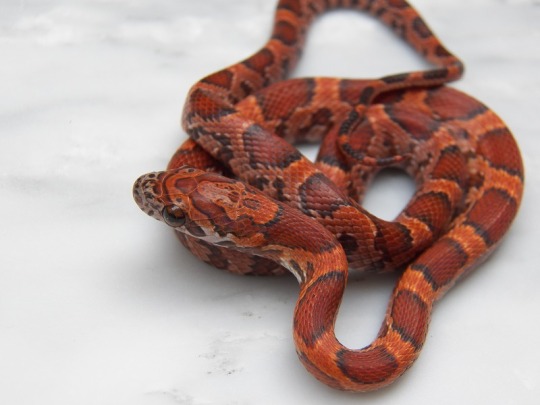
Also worth noting, motley and stripe also result in a hypo-like effect on snakes so telling a light anery motley or a dark ghost motley can be difficult without breeding trials.
Common Hypo A Mythtakes:
One of the most persistent myths about hypo A, is that it reduces the quanitity of black. People will see a snake with very thin or non-existent borders to their saddle markings and declare it a hypo based on that alone.
This is not true. Hypo reduces the *quality* of the black pigment. Instead of being a true stark black, they will be dark chocolate, brown, tan, gray, or purple-ish. Saddle edge thickness appears to be a polygenic trait, hence why okeetee-phase animals were linebred to create those thick borders. It is most likely that saddle edge thickness is the result of repeats of a particular set of genes, just like nose length is in dogs. For dogs, the more repeats they have, the longer their nose is, and if they have very few repeats, the nose gets shorter. This is why we have dogs with faces like pugs and faces like a sight hound. So I expect something similar is at work for saddle edges in corns because if you breed an okeetee phase to a normal corn snake, the offspring will have saddle thickness ranging between the two parental extremes.
For picture proof that hypo doesn’t reduce saddle edge thickness:

So how do we tell a normal apart from a hypo?
It’s all in those saddle edges. And the best way to tell is daylight photos that are super up close on those markings.
For example, this is a normal hatchling:

And while this snake is an anery as well, you can still see the true black on the markings really well:

And now, some hypos:

It might be tempting to think the lower snake is a normal, but these are daughter and son of the thick bordered hypo I showed above. Females of many morphs tend to be darker than their male counterparts.
To show they are both indeed hypos:

Here you can see that the markings are actually a chocolate brown, and that even her belly pattern is brown instead of black.
So there you go. That’s how you tell a normal from an animal carrying hypo A (or strawberry or christmas, gods how I hate these alleles).
186 notes
·
View notes
Photo

“Zippity, guess what? You may have two meeces pieces for dinner tonight!”
Yes want. Give two foods.
“Do you want to choose which one to eat first?”
No choos. I eet two foods.
“Yeah, sweetie, you get both. Which one do you want first?”
Want both first. Give two foods. No choos, eet both.
“Yes, you can eat both! First one, then the other.”
No. Both first. Om nom, like dis.
“…Oh. Well as long as you’re happy I guess.”
322 notes
·
View notes
Photo


Walking past Serendipity’s cage I glance over and see this pressed against the front of her enclosure, draped partially over a branch, looking very strange and bad. My heart jumps into my throat and I fling her cage open in panic hoping I’m not too late to help my baby girl. I tentatively touch her strangely papery skin and her body moves slightly and her little pink face rises up out of the substrate, wearing the tail of what I now recognize as her shed skin across her face like a hoodie.
She had apparently shed and then, deciding that she wasn’t quite done with the old skin, crawled back inside of it, backwards and inside-out, in what is possibly the second-best troll job a snake has ever pulled on me.

Nice prank, Serendipity. A++
Now if you’ll excuse me, I need to go lie down for a bit.
4K notes
·
View notes
Text
There's an enormous difference between animal rights and conservation.
I stopped buying Lush products a while ago, largely because of this issue (I didn’t want to give money to charities that use fear-mongering, hand-wringing anthropomorphism to actively fight biodiversity), and their treatment of the Little Fireface Project only solidified this. Now Lush has sponsored a conference whose end goal is essentially dead elephants, whether they want to admit that or not.

I’m sure they wouldn’t admit it, but their goals- no captive breeding, no zoo care- are hugely problematic from a conservation standpoint because- let’s face it- there’s no way to ensure elephant survival in the wild at this moment in time. Not when there’s such a global demand for ivory, and not when their habitats are so valuable to developers, timber companies, and mining companies.
This of course brings up a really salient ethical issue- if elephants can’t survive long-term in the wild, should we be “ark” breeding them, trying to preserve them in captivity for future generations? Unfortunately, that’s not the question these groups ask. Their “solution” is to just take the elephants from “bad” captivity (zoos) and put them in “good” captivity (sanctuaries).
However, these sanctuaries aren’t actually all that safe for elephants.
They’re not the African savannah minus people, where the elephants can just run free. There’s still barns. There’s still fences. There’s still tuberculosis- zoos can have that too, but zoos have better vet care and actually train the animals to participate in their own healthcare- which means that vet checks are less stressful. Sanctuaries, even the ones that do some vet training, still can’t really disinfect their grounds, and they can’t get rid of that TB bacteria- which can stick around for absolute ages. There’s still risks, and I don’t think these free the elephants people actually realize that. It’s like with cetaceans- the answer isn’t “free ‘em all,” nor is it “captivity is the ONLY SOLUTION.” Animal conservation, especially for species like elephants that have a pretty good wild population, is all about middle roads. There’s got to be a middle ground, and animal rights totally misses that. They’re so obsessed with the idea of “freedom” that they don’t actually stop to think about what freedom really means for these animals. Humans are the most successful invasive species anywhere in the world, and we’re not just going to go away because a bunch of animal rights activists think it’d be good. Even if they do successfully get elephants out of zoos, what good will that do? It won’t stop poaching, it’ll just make good science more difficult to do.
But animal rights people don’t actually care about science. They might think they care about individual animals, but they’re totally missing the point at a species/ecosystem level. Closing zoos will do absolutely nothing positive for wild animals- if anything, it’ll just make things worse. But that’s what these groups want- they still think zoos are animal jails and are willfully ignorant about the actual science of animal conservation. It’s not just about warm fuzzy feelings and the souls of animals- it’s about making logical, rational decisions to protect genetic diversity in these animal populations. Putting all those “poor abused zoo animals” in sanctuaries is not how this is done, and if you refuse to understand that despite the piles and piles of evidence, if you’re fundamentally anti-science, if you really think that feels are more important than reals… well, you’re part of the problem, then, aren’t you. It’s 2018. We’re wreaking havoc on our environment and our ecosystems, and without the careful application of scientific processes and knowledge, we are going to lose these things. We are going to lose the rainforests, we are going to lose millions of species- but hey, at least poor Dumbo got to live out his final years suffering from tuberculosis while somebody who thinks elephants actually talk to them dictated his care.
I’m gonna close with a quote from someone who was at the conference, because it’s kind of ridiculous, but I think proves a point.
“But what, at the end of these three, informative, tear filled, days, did we all come away with?
Did we put together a white board filled with bullet points and action steps on how to free every last one of the elephants around the world that are rotting away before our very eyes?
Nope, not even close.
But what we did achieve is something, in my view, even more important.
We listened to the elephants.”
We listened to the elephants. This is not science. This is not conservation. This is homeopathy at best. It’s not how you “save” elephants. How you save them is through careful captive breeding, making actual efforts to preserve wild elephant habitat with a minimum of human interference, studying their reproduction, diseases, biology, and other things that can impact reproductive success, and work with local communities doing boots-on-the-ground work to help develop sustainable infrastructure and jobs so that elephant ivory is less appealing to the communities that coexist with elephants. Taking elephants out of zoos and putting them in sanctuaries is not at all how to preserve a species.
Elephants are not people. They have extremely different needs, and to assume that a bunch of people who “heard the call of the elephants” but have… no actual scientific, medical, biological, or relevant zoological experience can somehow know how to conserve them better than people who actually study them is fucking ridiculous.
Which is why I’m still not gonna support Lush.
10K notes
·
View notes
Photo
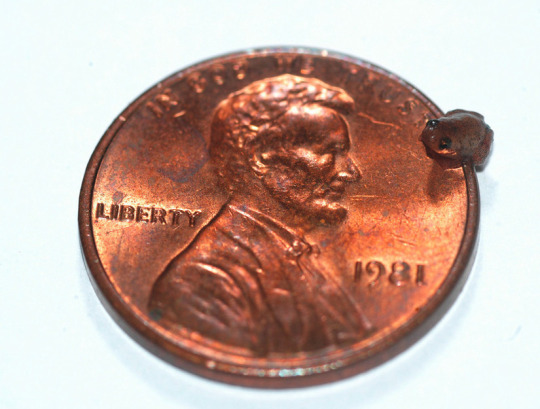
Researchers have discovered a new species of frog in Borneo which only grows to the size of a pea.
Finding the mini frogs, named Microhyla nepenthicola, proved to be a challenge due to their size. Adult males range in length from 10.6 to 12.8 millimeters.
109K notes
·
View notes
Text
you ever go fuck it and slap your own ass
148K notes
·
View notes
Photo
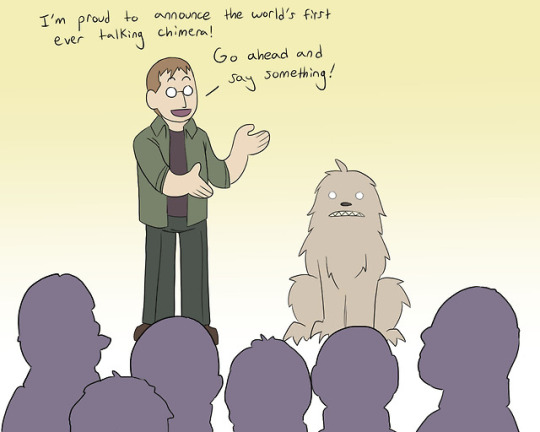
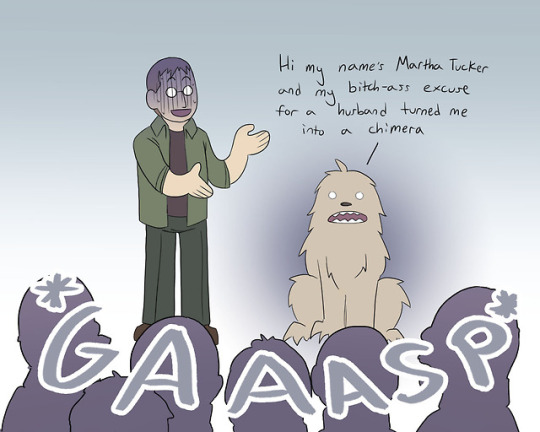
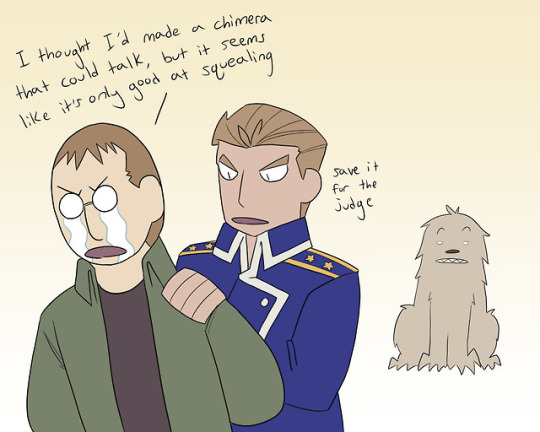
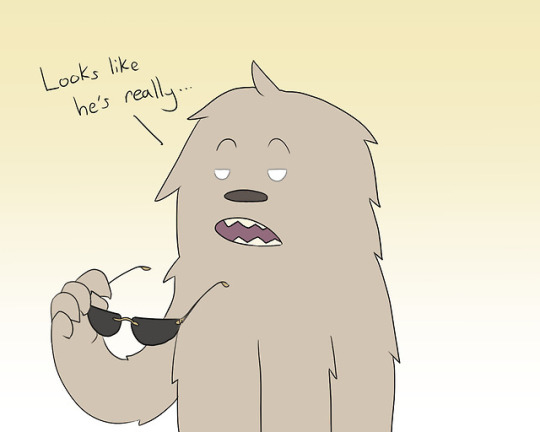
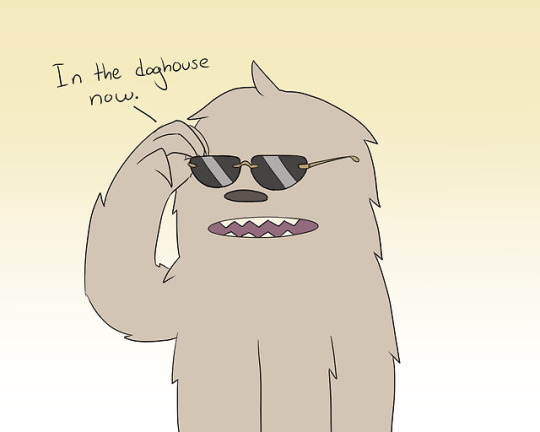
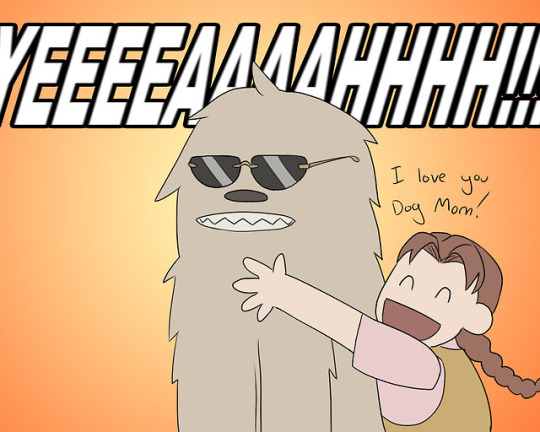
my allergy medication’s really been kicking in this year
36K notes
·
View notes
Text
the contrabass saxophone is such an absurd instrument

1M notes
·
View notes
Photo
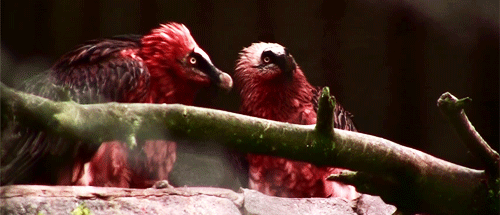
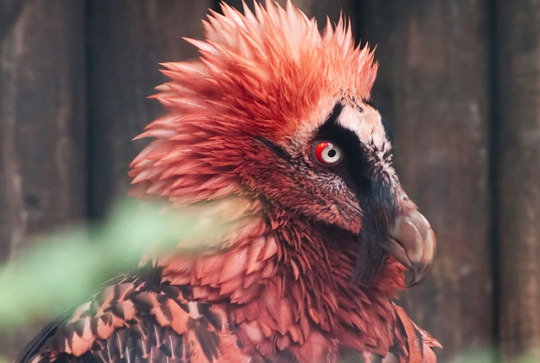
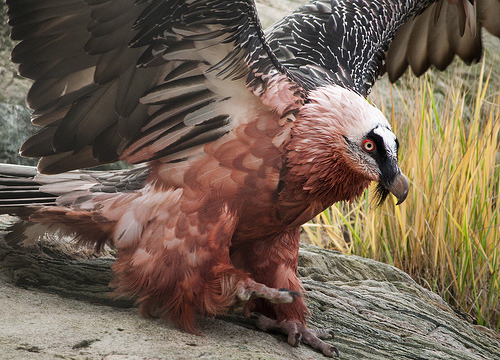
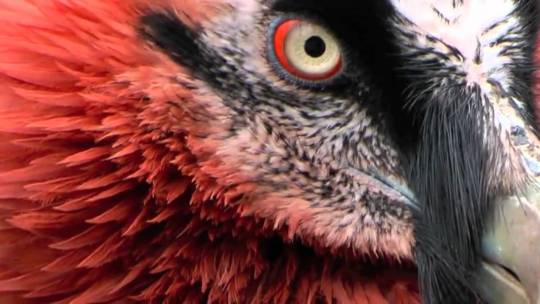
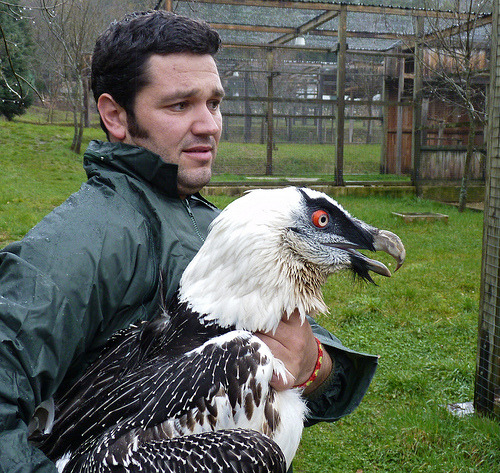


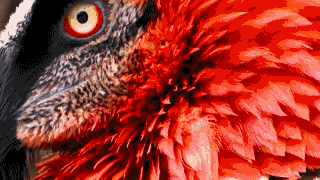
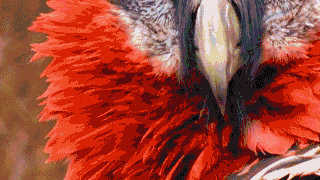
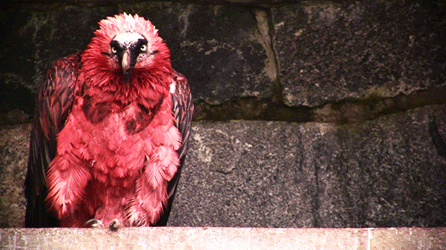
My all time favorite animal. The red-bearded vulture.
The bearded vulture, or lammergeier, lives on a steady diet of bones (more specifically the marrow) and dyes its own feathers blood red.
Bearded vultures come in various shades, from pure white to orange-red. Soils stained with iron oxide give the birds their fiery appearance. Lammergeiers apply the dirt with their claws and then preen for about an hour to ensure a bright orange/red glow. They are also attracted to other red things, like leaves and red wood. Captive birds also partake in this behavior, which suggests the activity is instinctual, not learned.
The soil doesn’t have any practical purposes; it certainly doesn’t make for good camouflage (though the birds have no natural predators anyway). Scientists have noticed that the birds’ age and size are directly correlated to the intensity of color. It is theorized that the hue is a status symbol. More soiled feathers indicates that the lammergeier had the time and resources to find an adequate place to bathe; the brightest-colored vultures should have the most territory and knowledge of their surroundings. Interestingly, these baths are done in secret, so most of the information gathered has been through spying on captive birds.
Bearded Vultures are most commonly monogamous, and breed once a year. Sometimes, especially in certain areas of Spain and France, bachelor lammergeiers will join a pre-existing couple to create a polyandrous trio. Females accept secondary mates because it increases the chances of producing offspring and doubles her protection. The birds usually don’t lay more than three eggs, so they can use all the help they can get.
These giant birds can grow up to 4 feet tall. They have a wingspan between 7 and 9 feet and usually weigh around 10 to 15 pounds.
In other words, this bird is awesome and I love it forever.
117K notes
·
View notes
Video
341K notes
·
View notes
Text
i;m gonna show you a fish w/ a gentle face
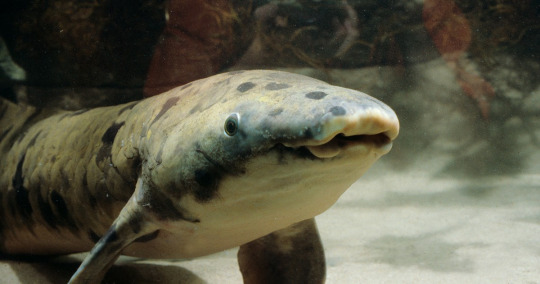
the australian lungfish, please observe.
32K notes
·
View notes
Link
This is a nice article from the Madison Area Herpetological Society that synthesizes and discusses a lot of the research in reptile enrichment and why it’s important for captive husbandry! Worth a read, and worth keeping on hand for reference/when arguing with people who think that reptiles don’t need and don’t benefit from enrichment.
271 notes
·
View notes
Text
I love elephant trunk snakes so freaking much. Can you imagine seeing this thick, 6-foot serpentine shape slithering through the murky water, closer and closer and then…

This dorky little puppy dog face pokes out of the water.
9K notes
·
View notes
